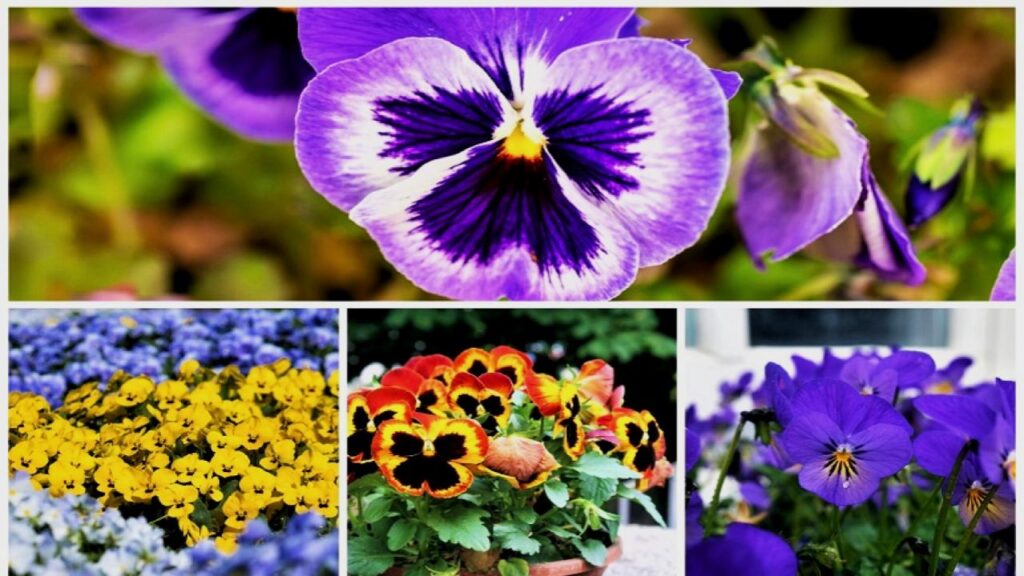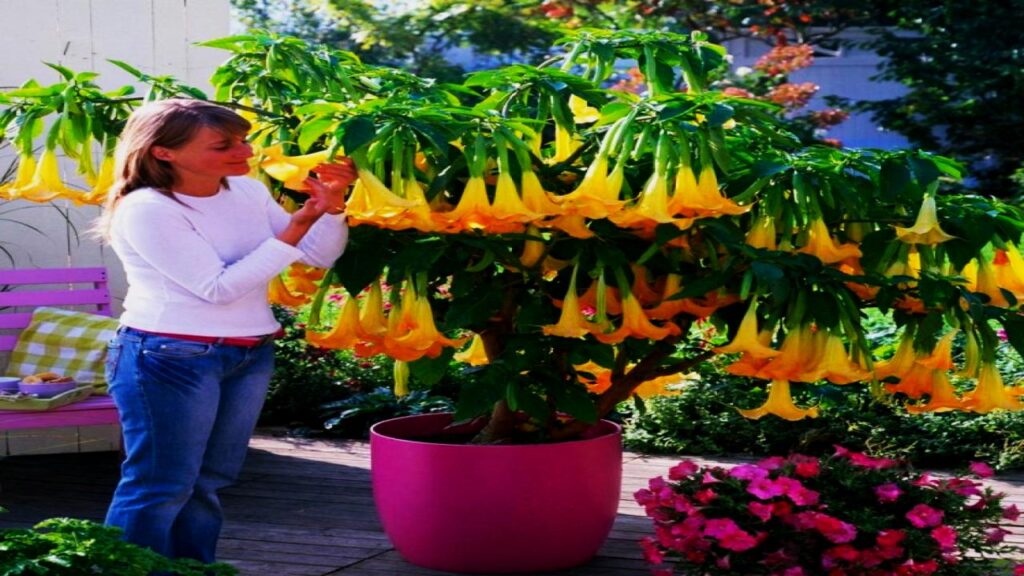If you’re looking for a flower that will wow your neighbors, make your backyard smell like a tropical oasis, and still carry a dark little secret—Angel’s Trumpet might just be your new favorite plant. This exotic beauty, also known by its botanical name Brugmansia, is one of the most stunning and dangerous flowers you can grow right at home.
These trumpet-shaped blooms, dangling elegantly in shades of white, yellow, orange, and pink, look like something straight out of a fairytale. But make no mistake—this plant packs a toxic punch. And while it’s a knockout centerpiece for your garden, it demands serious respect.What is Angel’s Trumpet?

Angel’s Trumpet (Brugmansia) is a genus of tropical shrubs or small trees native to South America. The plant gets its name from the massive trumpet-shaped flowers that can grow up to 20 inches long. When they bloom, especially in the evenings, they release a fragrance that’s both intoxicating and unforgettable.
While they add undeniable charm and tropical flair to your yard, every single part of this plant is poisonous. Seriously. We’re talking about toxic compounds like scopolamine, atropine, and hyoscyamine, which can lead to hallucinations, confusion, paralysis, and even death if ingested.
The Beauty That Bites Back
Gardeners across the U.S., especially in warmer regions like Florida, Texas, and California, love Angel’s Trumpet for its show-stopping blooms. But what most folks don’t realize is just how toxic these plants are.
Here’s the deal:
- Just touching the plant and then rubbing your eyes can dilate your pupils and blur your vision.
- Ingesting even small amounts can lead to serious poisoning.
- The plant has been used historically in shamanic rituals due to its hallucinogenic effects—but don’t even think about trying that at home.
According to Better Homes & Gardens, even other toxic plants like monkshood pale in comparison to the risks of Brugmansia.
How to Grow Angel’s Trumpet Safely
If you’re not discouraged yet and still want this beauty in your garden, here’s how to do it safely and successfully.
Ideal Conditions
- Zones: USDA 9-11. If you’re not in a frost-free climate, you can grow it in a container and bring it indoors in winter.
- Soil: Moist, fertile, well-draining soil is best.
- Light: Full sun to partial shade. In hot climates, some afternoon shade helps.
- Watering: Keep the soil evenly moist, especially during the growing season.
- Feeding: A balanced, water-soluble fertilizer every couple of weeks will help it thrive.
Propagation Tips
- Cuttings are key. Take 6-8 inch cuttings in the spring.
- Strip lower leaves and plant in moist potting mix.
- Keep warm and humid until roots develop.
Pruning & Care
- Prune in early spring before new growth appears.
- Shape the plant to encourage bushier growth and more blooms.
- Always wear gloves while pruning or handling the plant.
Pest and Disease Risks
Brugmansia can suffer from:
- Spider mites in dry climates
- Aphids and whiteflies on new growth
- Root rot if overwatered or poorly drained
Treat infestations with insecticidal soap or neem oil. Always monitor for pests, especially if kept indoors.
Where to Plant It

Never plant Angel’s Trumpet where kids or pets roam freely. The flowers might be beautiful, but they’re a nightmare if touched or ingested. Ideal locations include:
- Gated backyard gardens
- Raised beds or large containers
- Patios and decks (but elevated or out of reach)
Design Tips: What to Pair With Angel’s Trumpet
Create a tropical-themed corner using complementary plants:
- Elephant Ears (Colocasia): Big, bold foliage
- Coleus: Bright, multicolored leaves
- Hibiscus: Large blooms in similar warm climates
- Cannas: Tall structure and vivid flowers
This combo makes a dreamy paradise while respecting spacing and safety.
Warning Signs and First Aid
If someone accidentally comes into contact or ingests part of the plant:
- Contact Poison Control immediately (1-800-222-1222 in the U.S.)
- Watch for symptoms like dry mouth, dilated pupils, confusion, high heart rate, or hallucinations.
- Seek emergency medical help without delay.
Similar Dangerous Beauties
If you’re intrigued by poisonous pretties, here are a few others to know:
- Oleander – Another stunner with lethal effects.
- Monkshood – Pretty purple spikes, but even skin contact can be harmful.
- Foxglove – Heart-stopping beauty (literally; it affects heart rhythms).
For a full list of toxic garden plants, check out this helpful guide by Gardenia.
Should You Still Grow It?
Honestly? Yes, if you can manage the risk. Angel’s Trumpet is one of the most breathtaking ornamental plants out there. Its massive flowers, evening fragrance, and tropical vibes are hard to beat. But you’ve gotta grow it responsibly.
Don’t grow it just because it looks pretty on Pinterest. Know what you’re dealing with and handle it with the care it deserves.
Cultural and Historical Use
Historically, Brugmansia was used in South American cultures in religious and spiritual ceremonies. Shamans believed it had the power to connect humans with the spirit world. But the dosage was delicate—too much, and it could become fatal.
Today, such uses are discouraged and illegal in many places due to the plant’s toxicity. Its spiritual associations are part of its mystique but should never be tested.
